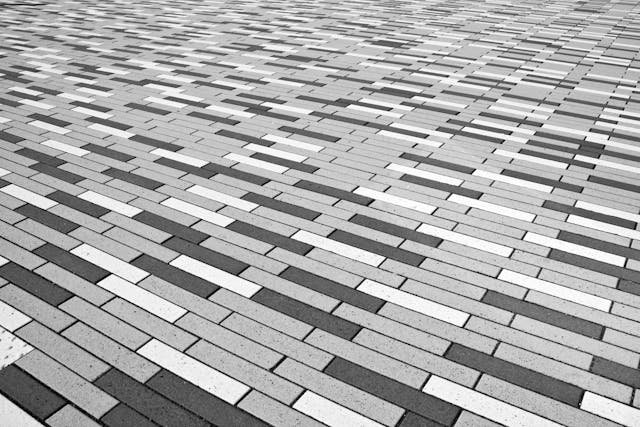Are you thinking about renovating your floors? You’re definitely not alone! A recent survey found that over 70% of homeowners believe that updating their flooring can dramatically transform their space. Whether you’re looking to replace worn-out materials or simply want to refresh your home’s aesthetic, a floor renovation can make a world of difference.
But before you dive headfirst into this project, there are several important factors to consider. From budgeting and material choices to design and preparation, having a solid plan in place can save you time, money, and frustration. So, let’s explore the key things to keep in mind before you embark on your flooring adventure. By the end, you’ll be equipped with the knowledge to make informed decisions and achieve the beautiful results you desire!
Budgeting for Your Renovation
- Assess the overall costs: Start by listing all potential expenses, including materials, labor, and any additional features like underlayment or trim. This comprehensive approach gives you perfect information about budgeting.
- Factor in potential unexpected expenses: Renovation projects often encounter hidden costs, such as repairs to the subfloor or removal of old flooring. Setting aside an extra 10-20% of your budget can provide a safety net.
- Set a realistic budget: Consider not just the flooring itself, but also installation costs. It’s wise to create a detailed budget that allows for some flexibility, ensuring you can make adjustments as needed without overspending.

Choosing the Right Flooring Material

- Understand the pros and cons: Different materials, like hardwood, laminate, tile, or vinyl, have unique benefits and drawbacks. Research these to find the best fit for your lifestyle and needs.
- Consider the purpose of the room: High-traffic areas, like hallways and living rooms, may benefit from more durable materials, while bedrooms might call for softer options.
- Look into eco-friendly options: If sustainability is important to you, consider materials that are sourced responsibly, such as bamboo or reclaimed wood, which can enhance your home’s appeal without compromising the environment.
Design and Aesthetic Considerations
- Complement of home design: Think about how your flooring choice fits into the broader aesthetic of your home. Will it enhance or clash with your existing décor?
- Color schemes and patterns: Consider the color palette of your home. Lighter colors can make a space feel larger, while darker hues can add warmth. Patterns can also introduce visual interest but should be used thoughtfully to avoid overwhelming the space.
- Trends to consider: Stay updated on current trends to make informed choices. For example, neutral tones and natural textures are gaining popularity and can provide a timeless look.

Preparing Your Space

- Clear out furniture and obstacles: Before installation begins, remove all furniture and décor from the area. This not only gives you space to work but also protects your belongings from damage.
- Ensure your subfloor is in good condition: Inspect the subfloor for any damage or irregularities that could affect the installation. A solid foundation is crucial for the longevity of your new flooring.
- Plan for dust and noise: Renovations can be messy and noisy. Taking precautions, like sealing off areas and using drop cloths, can minimize the impact on your living space.
Hiring Professionals vs. DIY
- Weigh the benefits and drawbacks: Hiring professionals can save you time and provide expertise, but it also comes with additional costs. On the other hand, DIY can be rewarding but may lead to mistakes if you’re inexperienced.
- Evaluate your skills: Honestly assess your DIY capabilities. If you have experience and confidence, you might tackle smaller projects. For larger renovations, hiring a pro could be the best option.
- Get multiple quotes: If you decide to hire a contractor, obtain several quotes to compare prices and services. This will help you find someone who fits both your budget and project needs.

Maintenance and Longevity

- best maintenance needs: Different flooring types require varying levels of care because the key material of those flooring elements are not the same. For instance, hardwood needs regular cleaning and occasional refinishing, while vinyl is typically easier to maintain.
- Factor in long-term durability: Think about how your flooring will hold up over time. I want you to invest a little bit more for flooring because we will not want to recreate the same floor for a long time. So here is the pro tip that brings some good products for your floor.
- Consider warranties: Many flooring products come with warranties that can provide peace of mind. Make sure to read the terms to understand what is covered and for how long.
Start Your Journey
Before diving into a floor renovation, taking the time to consider these essential factors can save you not only money but also a significant amount of stress. From budgeting and choosing the right materials to preparing your space and deciding whether to go the DIY route or hire professionals, each decision plays a vital role in the overall success of your project.
Remember, your flooring sets the foundation for your home’s aesthetic and functionality, so it’s worth investing the effort to get it right. As you plan, keep in mind the importance of maintenance and longevity to ensure your new floors continue to look great for years to come.
Are you ready to transform your space? I want you to share your information about the flooring experience! Your insights could help others embark on their flooring journey with confidence. Happy renovating!



